Hello fellow planeswalkers!
I've been quiet for a long time, and the cosmology as I had thought about it is actually quite done as it is, in that it is meant to be generic, a sort of "meta-cosmology", a template that anyone can use to make his or her own thing.
An idea has kind of sprout out of this loose project, something a bit more exotic and a bit less generic.
Update: This will be part of the cool "If I Ruled The Multiverse" #dndnext blog carnival started by Rich Green! Hashtag on Tweetter is #5eplanes and this is our beautiful logo by Symatt! :)
Real world / anthropological inspirations: three "classes" of gods.
The idea sparked while talking about the real-world inspiration behind the "trinity" composed by Elders, Primordials/Titans and Gods.
I tried to explain how in our world, all long-lasting cultures tend to have in their mythologies at least two "classes" of gods, the older and the newer, with some also remembering some beings that were pure chaos and that came way before even the first generation of "gods".
I tried to explain how in our world, these different generations of gods represent the level of cultural advancement of the culture that invented them.
The first generation of gods, the Elders: pure darkness and chaos.
The "Elders" would be chaotic and destroyers because the most primitive cultures that generated them basically viewed the whole world around them as an evil killing machine, that destroyed everything and everyone.
They are very often represented as hybrid beasts that mix the worst traits of the worst predators, and are more often than not aquatic or tied to the darkness, because both water and darkness are the two "elements" in which man feels less safe.
Typically, these "deities" require human sacrifices, irrational rituals and even worse things from their desperate followers.
The second generation of gods, the Primordials: masters of the elements.
Then comes the Elemental/Primordial generation, which is the beginning of rationalizations.
These gods start having humanoid features, especially in their "personalities", but they're often identified with natural landmarks or forces (volcanoes, the sea, etc), and their destructive side is directly connected to this.
We still have aquatic and darkness "deities", but they're a bit more benevolent.
They're not anymore mindless killers, but they're like very moody and powerful giants. Please them and they let you pass, anger them and they turn the forces of nature against you.
Generally speaking, the age of these "Titan gods" is a "golden age", in which the first mighty heroes arise, and the land begins to be generous to mortals. And these mortals become the legends of the successive era. Their grand-grandsons will remember this age as an age in which life was easy and good. Probably because rationalism hadn't yet "plagued" the minds of men.
The third generation of gods, the Celestials: incorporeal and intelligent.
Then comes the age of the classical Gods, Celestial gods in that they are much more often associated with the sky and/or are considered "ethereal" and abstract.
These gods are all but completely humane, and even if they still control the forces of nature, they are not one and the same with them, and they do so with intelligence, even if they're often subject to human emotions and passions, and can even fall in love with humans.
[The previous generations of gods, mythologially speaking, could also probably procreate with humans, but the offspring would be either complete monsters (in the case of Elders), or maybe giants and other not so lucky beings (in case of Titans/Primordials). Celestial gods procreating with humans would instead produce the typical demi-gods, or at the very least legendary heroes.]
Men living in this age (which I consider the typical age in which D&D campaigns are set) have fallen a bit back in terms of happiness. Their gods are not evil anymore, but they're also distant, and the advancement of civilization has probably brought more nations into contact, generating war. And rationality and the beginnings of science/magic have also made the mortals feel more wary of each other.
Note that I know this latest generation of gods and connected era isn't actually a faithful representation of the classical Greco-Roman gods from which it takes inspiration: I'm shifting things a bit forward to encompass the "medieval feeling" of typical D&D settings, but without of course including monotheism.
In this "system", the classical Greco-Roman gods and age would sit a bit in the middle between the Celestial and the Elemental.
The tree types of gods as a foundation for a D&D cosmology.
But all of this is not the point! The point is that as you can see,
these generations seem to build one on top of the other. But most
D&D campaigns would like both a plane or two associated with each
one of these categories, and most importantly, would want these
categories available at all times. That is, the Elders must still be a
threat, and so the Elemental gods.So I thought about the most simple concept of geology, my field of study and I hope work. "The new always sits on top of the old".
Gods and their domains "pile up" on top of each other, inside the earth.
So here's the idea: these three generations of gods or powerful beings, would actually have dominated the world in different and distant times. But due to cataclysms, time itself and a good dose of fantastic elements, they would have not died but gone where all really old things go: underground.
So much more than in the cosmology I described in the previous posts, this cosmology would be "vertical" and "localized". That is, planes exist in physical spaces (although they could still be infinite, at least from the point of view of mortals), and they exist on top of each other.
____________________________
The Elders: primitive and dangerous, sleeping deep underground or under the sea.
Note that Elders, in this case, are not anymore the beings from other universes. Their alien nature is represented more by the fact that the races that worshiped them were very primitive ones, and this in D&D means they were not human-like. Perhaps not even humanoid.
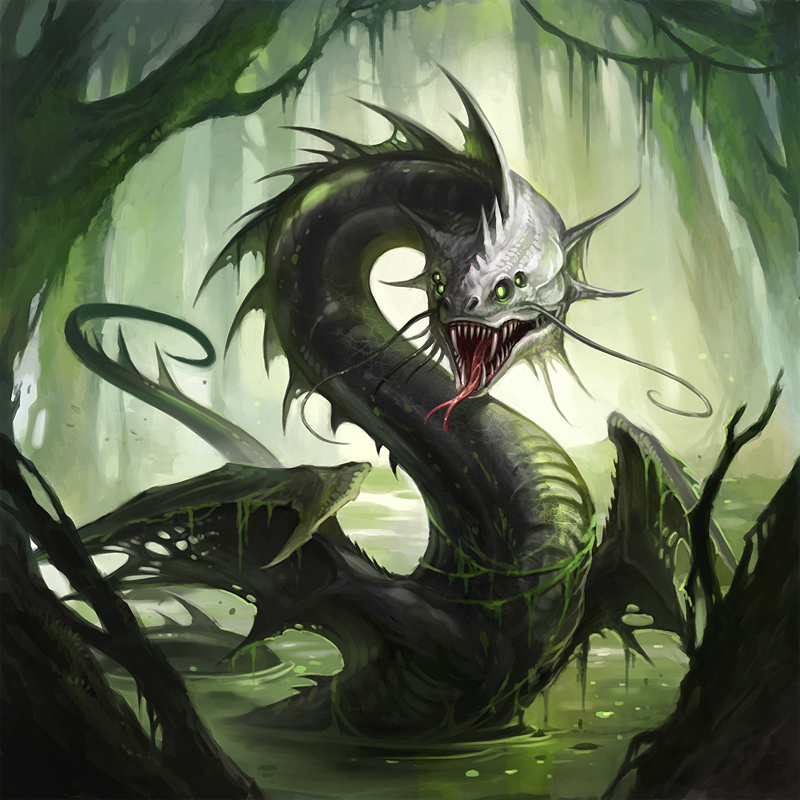
A dragon-like elder, distinguished by the later dragons for its more primitive, demonic, and chaotic features...

Another demonic and strange Elder god...
What's more, I would add demons in this mix. All the strangest and more evil creatures, including demons and aberrations, would be the spawns or maybe even hybrid offspring of these Elder Gods.
The Elder's favored intelligent races: monstrous and primitive.
Kuo-toas, Lizardmen, Sahuagin, Troglodytes and the like would be the races that "thrived" when these gods were at the apex of their power, and the appearance of these gods would have been similar to that of these races, which were probably their creations (or the opposite!).
While humans were just scared cave-men or hadn't even evolved yet, these first races would have erected temples and cities in honor of these gods. Elves probably hadn't yet arrived in the world (because maybe the Feywild wasn't yet connected to the world or didn't even exist because the true "elven gods" weren't even born yet), same for all the typical races. The world was too violent and chaotic for these races to survive.

Colossal serpentine Elders rise from the deepest primitive jungles to appreciate the temples that their reptilian followers have built for them...
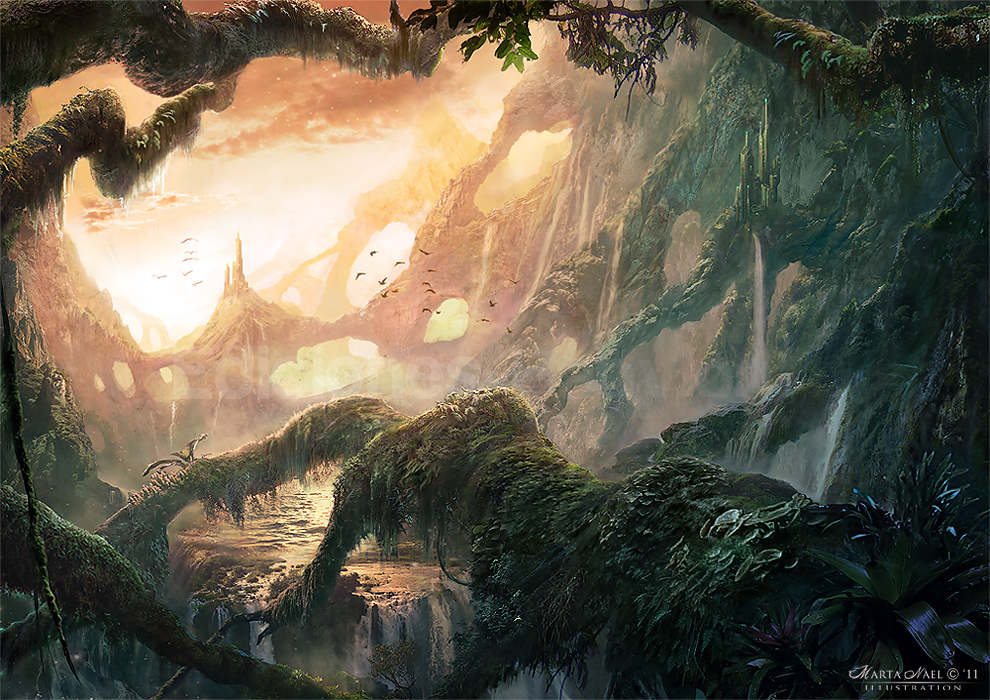
The surreal, chaotic, and incredibly dangerous world of the First Age.
The legacy of the Elders.
Some races will have murky and chaotic legends and stories recalling this age, but there would be so many different versions of these stories, that nothing could be sure. So this era will go away practically forgotten, its knowledge recorded only in dead languages written on lost objects by all but extinct races.
This also allows the DM to decide that just about anything could have happened in these ancient times.
___________________
The rise of the Primordials: embodying the natural disasters that birthed them.
Natural disasters came in big numbers at the end of this era, until the primitive races and their first empires were all but destroyed, and the very surface of the world shifted and this "corrupted" world was swallowed by the earth itself, becoming the first Underdark.
The second age would be elemental-themed also in the fact that it is born of the great disasters that submerged, swallowed and destroyed the elder world/era.
Volcanoes are more active than ever, big deserts abound, but also new virgin forests where the climate allows it, and in general, even if nature is fierce, there is a lot of variety and this permits the rise of civilization here and there.
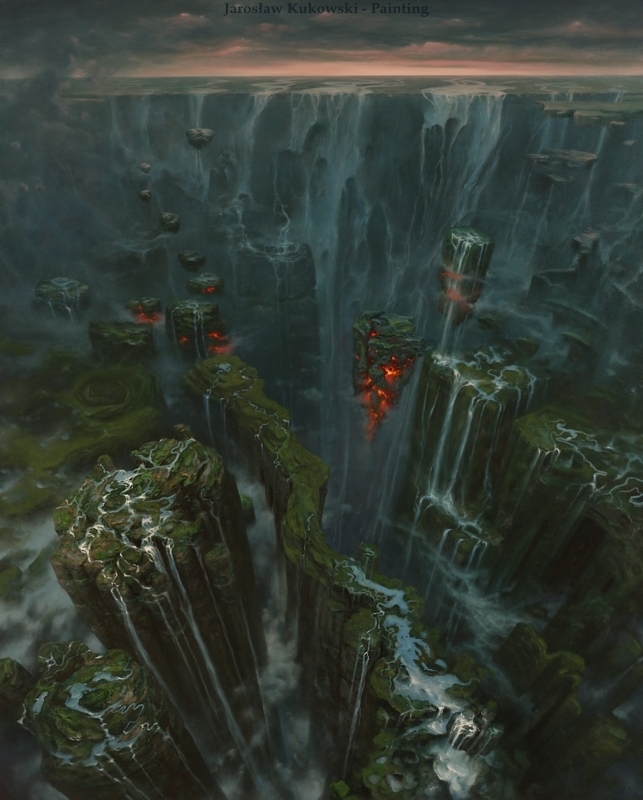
The colossal disasters and commotions that destroyed the first age world, sending it underground, and starting the "elemental age"...
The Primordials' favorite races: dragons and giants, but also elves and dwarves.
The classical races are born in this age, although most of them are still primitive. Humans in particular, are just coming out of their caves.
This is the age of dragons (actually, some of the elemental gods can and should be draconic), of giants, and of the glorious dawns of elves and dwarves.
The Feywild or "World of Faerie" from which elves traditionally come from would be something like the dream of a Forest God, turned into a parallel world.
Note that Primal Spirits are mixed with these Primordial gods in this cosmology, just as Demon Lords and Elders are grouped together.

A draconic "forest god" primordial, with a small dragon.
The typical Primordials would be the more classically elemental of the bunch, while the "primal spirits" would be "elementals" of the primordial forests, embodying the "elements" of life, wood, etc.
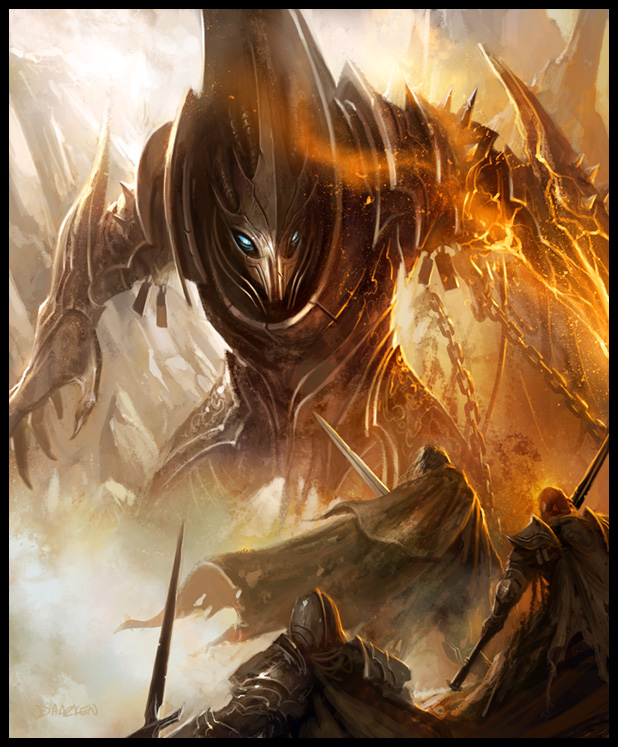
A typical elemental Titan, battling the very first mortal heroes...
Dwarves would instead be of course the creation of an Earth primordial, which you can cal Moradin if you like.
The problem of the origin of the gods: a non-solution that still works.
It is actually tricky to decide if we want the races to be created by gods as the D&D tradition wants, or the contrary.
This whole idea was born while thinking the contrary, but it's not necessary to be coherent in this in all cases. That is, some gods could predate their followers or have created them, while some other could have actually originated supernaturally from the prayers of the mortals.
One way to see things is that a race becomes connected to a god when it reaches its apex. The god could be either a creation or a creator, but simply enough it becomes "associated" with the race when it becomes important, when it acquires culture and spirituality.
This allows for a much more ancient human race, perhaps even having resisted since the first age. Because we don't have to think "who created them?", since it's not a question relevant to this cosmology. It's more like "they're not an important race yet, so they don't have a patron god".
In this case, Elves should not "come from the dream-world of the Forest god", but perhaps having gained access to this world since they became the favorite race of the Forest God, because of their natural affinity and respect for Forests, and their wisdom. More of a "each god chooses its favorite race" thing, that allows ambiguity between creator and creation, and a good measure of mystery.
Anyway, this age is the typical ancient time of any campaign. A "golden age", but where Elves and Dwarves start their wars or grudges, Dragons thrive, Giants rule etc.
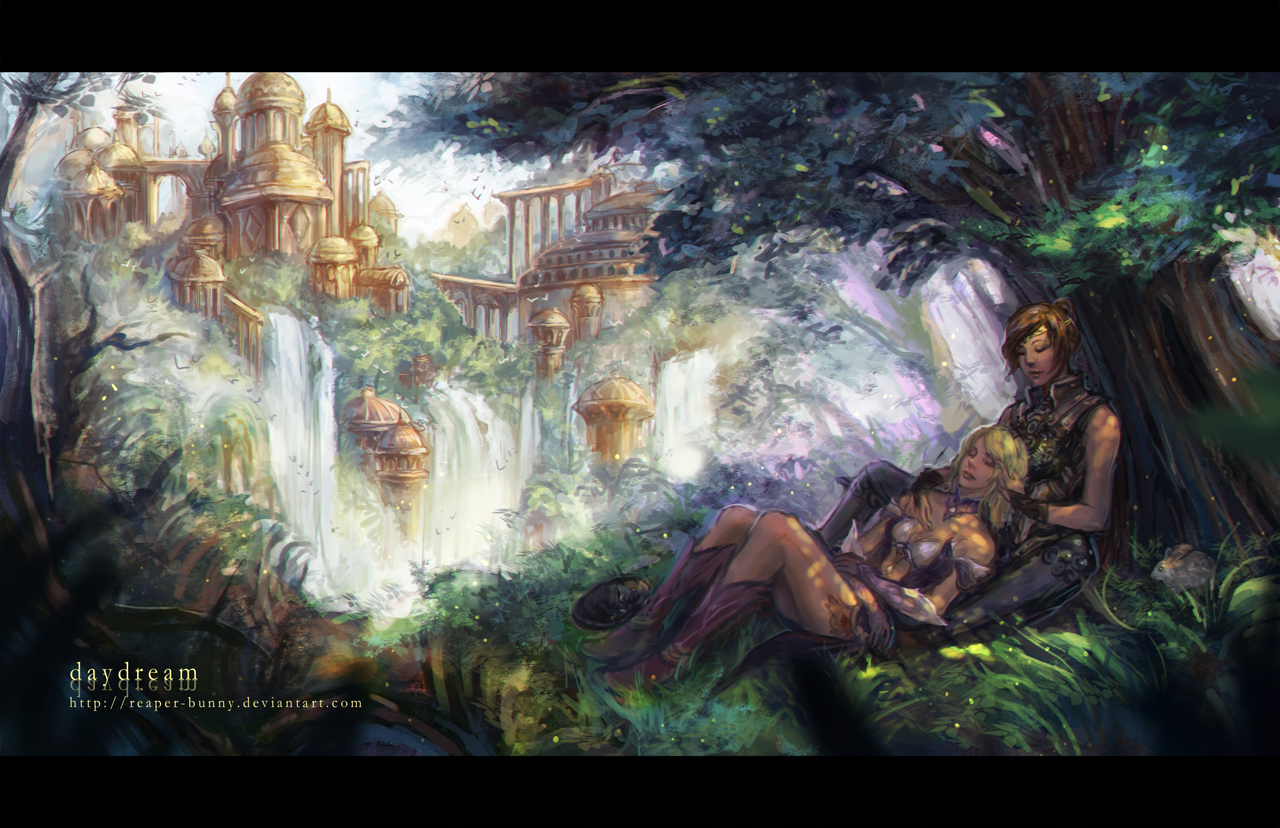
The second age is the "golden age", where mortals are strong and happy (or remembered this way), and the first empires rise, in harmony with nature, at least for a time...
_______________________________
The classic Celestial Gods are born: from material entities to abstract entities.
The third age is the age of men. The second age ended a bit like it started: great disasters, but this time more magical in nature. The elves pushed their spells too far, the dwarves dug to deep (perhaps unleashing the demons locked away before!), the dragon-gods rained fire and ice on the whole earth and made mountains crumble while fighting for supremacy, and the giants did other terrible and BIG things.
The result? The world changes again, many places are swallowed by the Earth, the great Elven empires blink away into the Feywild bringing with them the first primordial forests, and everything becomes smaller and less extreme. That's why men (and other "weak" races, such as halflings) begin to thrive.

The third age world, where everything is "smaller" than in the past, an in which humans begin to thrive, wondering about the ancient ruins that surround them...
The new gods could also have been born out of the magical disaster. Or perhaps they're just created by the prayers of men, finally listened to. In any way, these new gods are now secluded in the skies and are ethereal.
They can't personally walk the earth like the previous gods, but that doesn't mean they can't bring trouble. In particular, they use their very numerous followers [humans always beat all the other races at one thing: reproduction rate!!] making them battle against each other for supremacy, and things like that. Before, holy wars were wars between gods. Now the gods just move their mortal armies from above.
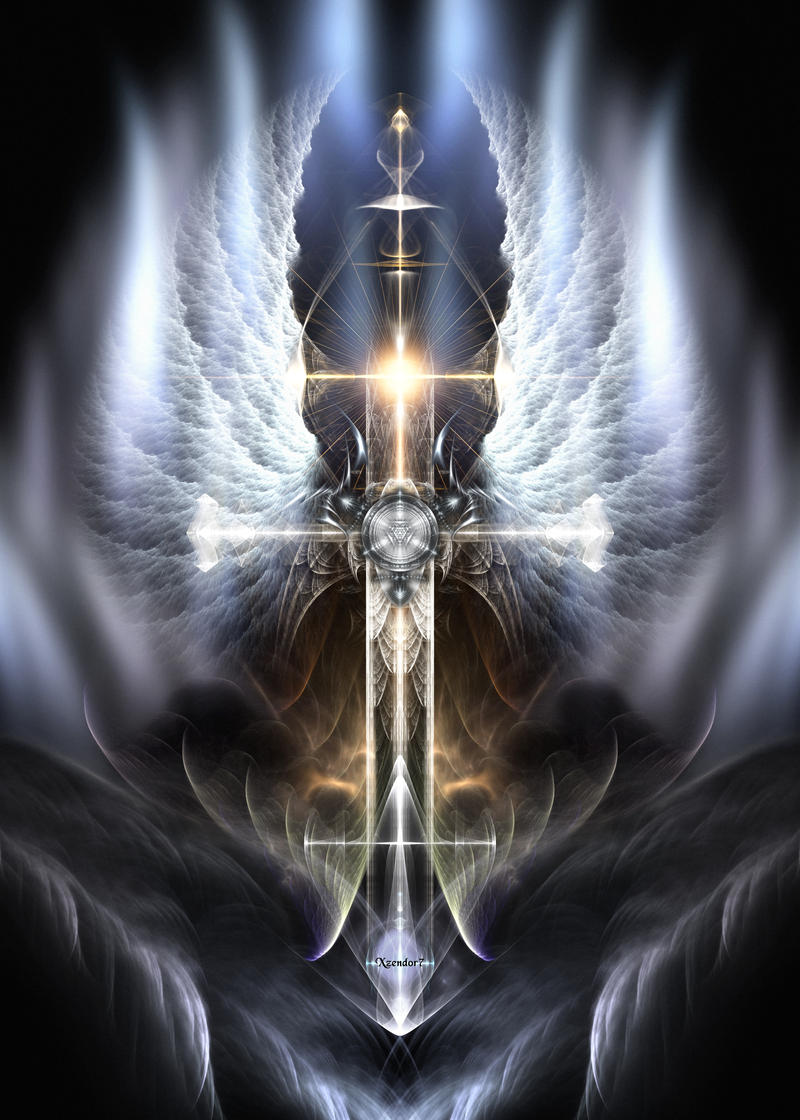
If humans could see the true forms of their celestial gods, they would not perfectly understand it. Still they can appear also in very human-like form, although ethereal.
The age of humans, and the legacy of the previous ages.
So humanity is apparently the biggest mortal race and thus the luckiest in history, but it is also the most divided, a bit because of the gods, and a bit because of human nature itself (and aren't the two things the same after all..?).
In this bitter/sweet state of uneasy expansion into a rather emptied world, humans discover that in the murky past, the world was different and hosted big empires and a lot of knowledge has been lost to the earth and sea.
A runic artifact uncovered from abandoned halls in the mountains could teach useful magic as well as bring back from hibernation some forgotten elemental god.
A strange idol washed ashore after a storm could imbue its finder with psionic powers but also give him strange visions that could make him bring back a cult of an Elder deity, and with time the Elder itself.

Dangerous ancient rituals risk to surface back in the Third Age, bringing terrible evils back with them...
______________________________
Final considerations on the cosmology: simple and straightforward.
It's actually a very simple cosmology, which uses time and space as the true limit between the various "planes" and deities, which include all manners of powerful beings.
Adventurers could reach the "planes" (that is, the dominions of the current or past deities) relatively easily, and although they would still be arcane, dangerous, and alien places, the fact of having them on Earth and the fact that each of them had been on the very surface of the world at some point in the recent or distant past, makes this cosmology ideal for small campaigns in which players want to see a lot of different places, and dig into a lot of different plots and stories in a short time.
There's no need of portals or costly rituals to reach fantastic places. The adventurer just needs a bit of knowledge, and the guts to go deeper underground.
It also makes for the perfect "infinite dungeon", in which each level brings you to something more ancient, strange and dangerous.
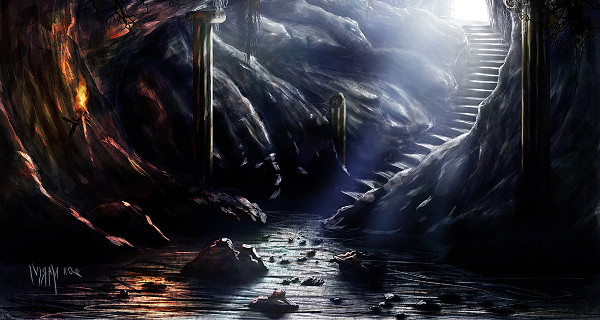
The dungeons and deep places of the world always lead to the ancient locales of the previous ages. The deeper one goes, the more ancient things he encounters...
So this is why although being quite new in conception, it is also an "old" cosmology: it's actually a cosmology for the good old dungeon-centric typical D&D world!
And it can be made into a very realistic and simulationist cosmology (with gods being only invention of each race, for example, made powerful by the number of their followers), or a classic fantastic one with ease.
What's next??
As I typically do, I considered this project "done" when it's actually just begun.
This is because I like cosmologies to leave a lot of room for customization, but since I started this one saying it would be less generic, I think I will follow up with another post with the actual facts and details about this one, or at least, my version of this one.
Giving the cosmology a name is also necessary at this point. It must be something related to the earth, because if you noticed, all is earth-centric, all has originated on the earth and many things have been buried under it.
The first word that comes to mind is "Cthon", the greek-roginated word that is used to refer to the most ancient deities of ancient Greece, the "cthonic gods", more or less similar to Elders and/or Primordials.
So let's change the title of this post, and in the next post, we'll be delving deep inside the World of Cthon!









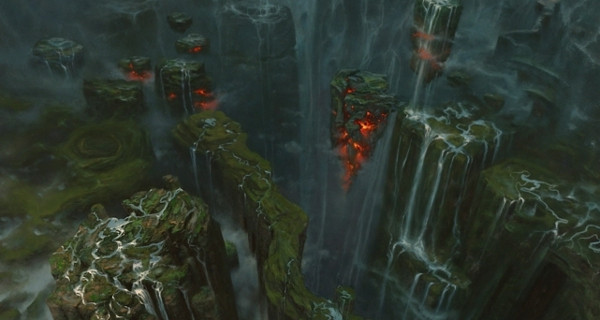






No vabbe, col cacchio che mi leggo altra roba in inglese oltre alla mia tesi! Poi ho visto troppa roba oscura... io sono più tipa da Narnia, urca urca tirulero oggi splende il sol! :P
ReplyDeleteHahahha! :D Tranquilla, è un'intera cosmologia, quindi arriveranno presto anche i posti "urca urca tirulero oggi splende il sol"! XD
ReplyDelete... Ma in principio, era solo caos e oscurità! ;P